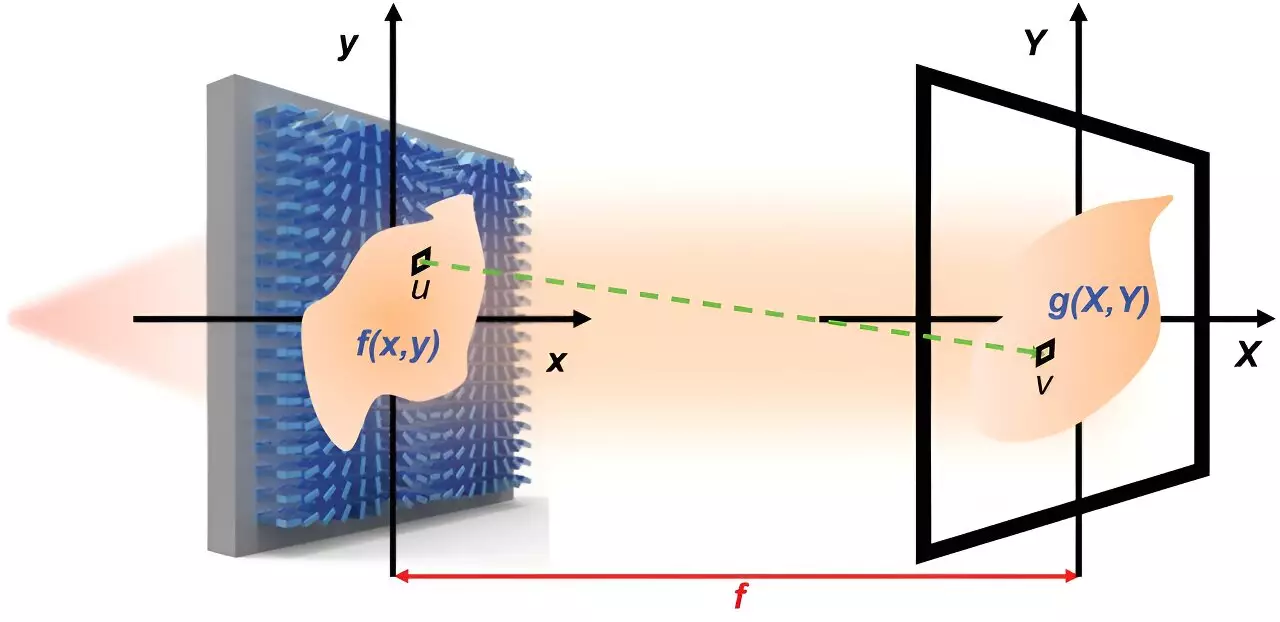In a world driven by artificial intelligence and advanced technologies, the speed and efficiency at which computers process images and identify objects are of significant importance. Traditional methods often require substantial computing power and energy, resulting in slow processing times. However, a group of electrical engineering researchers at Penn State University has developed a groundbreaking solution to this problem: the metasurface.
Unleashing the Power of the Human Eye
Drawing inspiration from the remarkable image processing capabilities of the human eye, the metasurface acts as an optical element, enabling the control of light through the use of tiny, strategically placed nanostructures. Led by Professor Xingjie Ni, the team published their incredible invention in the prestigious scientific journal, Nature Communications.
One of the primary advantages of the metasurface lies in its ability to preprocess and transform images before they are captured by a camera, facilitating more efficient and streamlined processing by a computer or artificial intelligence system. Consequently, this groundbreaking technology significantly reduces the required computing power, energy consumption, and data bandwidth.
From Cartesian to Log-Polar: Unveiling a New Perspective
The metasurface revolutionizes image processing by converting images from the traditional Cartesian coordinate system, where pixels are arranged in linear rows and columns, to the log-polar system. By distributing pixels in a bullseye-like fashion, the new coordinate system mimic the arrangement of light receptors in the human eye, focusing on the most important features while gently blurring the peripheral regions. This innovative approach not only saves data bandwidth but also enhances the clarity of crucial aspects within a photograph.
Effortless Integration and Operation
Implementing the metasurface is a straightforward process. Placed in front of a camera, the metasurface utilizes light-bending nanostructures to transform the image from Cartesian to log-polar coordinates. The image is then digitized, preserving the original picture’s intricate details, before being transferred to a computer. The metasurface operates entirely on the power of light and works at the speed of light, eliminating the need for additional power sources.
In diverse situations where images may vary in size or orientation, the metasurface plays a vital role in preprocessing the images and making them resistant to scale and rotation changes. This crucial step empowers artificial intelligence applications to more accurately identify and recognize objects despite variations in their appearance. By improving object recognition, the metasurface enhances the overall effectiveness and efficiency of AI systems.
Exploring the Possibilities: Applications of Metasurface
The potential applications of the metasurface are vast and promising. One such area where this revolutionary technology can make a significant impact is target tracking and surveillance. By utilizing the metasurface in conjunction with AI systems, it becomes easier to track and map the movement of objects, such as cars, across a cityscape. This breakthrough enables enhanced efficiency in surveillance systems by recognizing the same car from multiple street view cameras.
The Metasurface: Redefining Image Processing
The advent of the metasurface marks a transformative breakthrough in the field of image processing. By unleashing the power of the human eye and implementing nanostructures to control light, this remarkable innovation enhances the speed, efficiency, and accuracy of image recognition and processing. From reducing energy consumption to streamlining data bandwidth, the metasurface stands poised to redefine the landscape of artificial intelligence systems and revolutionize target tracking and surveillance technologies. As we embrace this new era, the metasurface is undoubtedly a beacon of hope for a future of more advanced and intelligent computing.



Leave a Reply